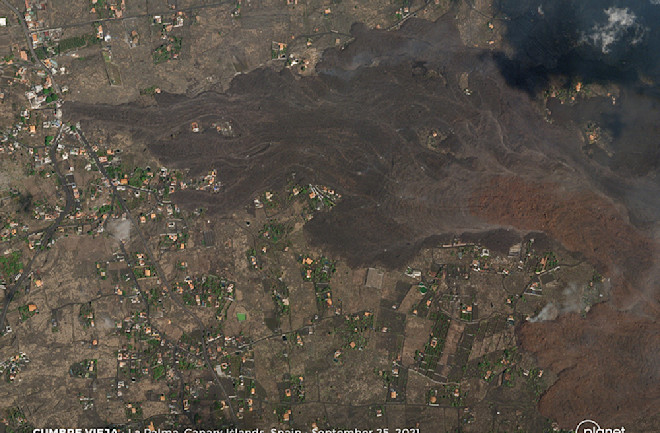The eruption of Cumbre Vieja on La Palma in the Canary Islands has kept volcanologists monitoring the volcano on their toes. Over the past week, multiple vents have opened on the volcano and the eruption has oscillated between calmer lava flows and more explosive lava fountains. Even though the eruption is still going strong, authorities are beginning to let people back into areas that don't appear to be in the path of the continuing lava flows.
Ash and Lava Flows Continue to Wreak Havoc on La Palma in the Canary Islands
The new eruption on La Palma continues to roar with a mix of lava flows and more explosive eruptions that are making life difficult on the island.

Lava flows from Cumbre Vieja on La Palma in the Canary Islands on September 25, 2021. Credit: Rob Simmon, Planet, used by permission.
Newsletter
Sign up for our email newsletter for the latest science news
0 free articles left
Want More? Get unlimited access for as low as $1.99/month
Stay Curious
Sign up for our weekly newsletter and unlock one more article for free.
View our Privacy Policy
Want more?
Keep reading for as low as $1.99!
Already a subscriber?
Find my Subscription
More From Discover
Stay Curious
Subscribe
To The Magazine
Save up to 40% off the cover price when you subscribe to Discover magazine.
Copyright © 2025 LabX Media Group

